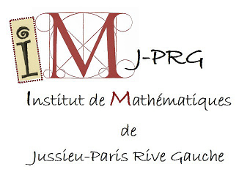| Résume | 14h00--15h00 : Frédéric Déglise (Université de Bourgogne et CNRS) t-structures on motives and vanishing
The motivic t-structure on Voevodsky mixed motives is the principal remaining problem of the theory envisioned by Beilinson. A by-product of the theory defined by Voevodsky over a perfect field is the existence of a natural t-structure, the homotopy t-structure. Surprisingly the difference between the homotopy t-structure and the hoped-for motivic t-structure is a priori very small; just one misplaced shift. But the heart of the homotope t-structure is already far from being the category of abelian mixed motives.
One the other hand, the homotopy t-structure has good properties and is amenable to computation. In particular, it can be glued other arbitrary bases, much like the perverse homotopy t-structure. The resulting t-structure was first studied by Ayoub. As we have shown with Bondarko, a major tool in this regard is the use of dimension functions, in close analogy to Gabber's treatment of perverse t-structures. This allows us to improve the results of Ayoub, and give new computations, sometime close to what exists for perverse sheaves.
This leads us to think that the study of the homotopy t-structure might contain the key to establish the existence of the motivic t-structure. Looking back to an old tentative definition of Voevodsky, I will illustrate this feeling by renewing two conjectures of the field, showing that they act as a bridge between the homotopy and motivic t-structures.
15h30--16h30 : Dustin Clausen (Universität Bonn) On Etale K-theory
In general, the etale sheafification operation on presheaves of spectra is completely inexplicit, and etale sheaves of spectra do not have the same good formal properties as etale cohomology does. Nonetheless we show that these troubles don't arise for the etale sheafification of algebraic K-theory, which has surprisingly good properties, including: 1) continuity; 2) hidden functoriality; 3) a strong connection with Weil-style cohomology theories via a "motivic filtration". Furthermore, all of this is valid over a completely general commutative ring. This is joint work with Akhil Mathew, in parts also with Bharghav Bhatt.
17h00--18h00 : Thomas Nikolaus (Universität Münster) Cyclotomic spectra and Cartier modules
We review the notion of cyclotomic spectra and basic examples such as THH. Then we explain how this is related by a t-structure to (integral, p-typical) Cartier modules. This explains nicely the appearance of de Rham Witt complexes in the theory. The comparison relies on the notion of a topological Cartier module. We present examples such as Witt vectors and K-theory of endomorphisms. This is joint work with Ben Antieau. |

